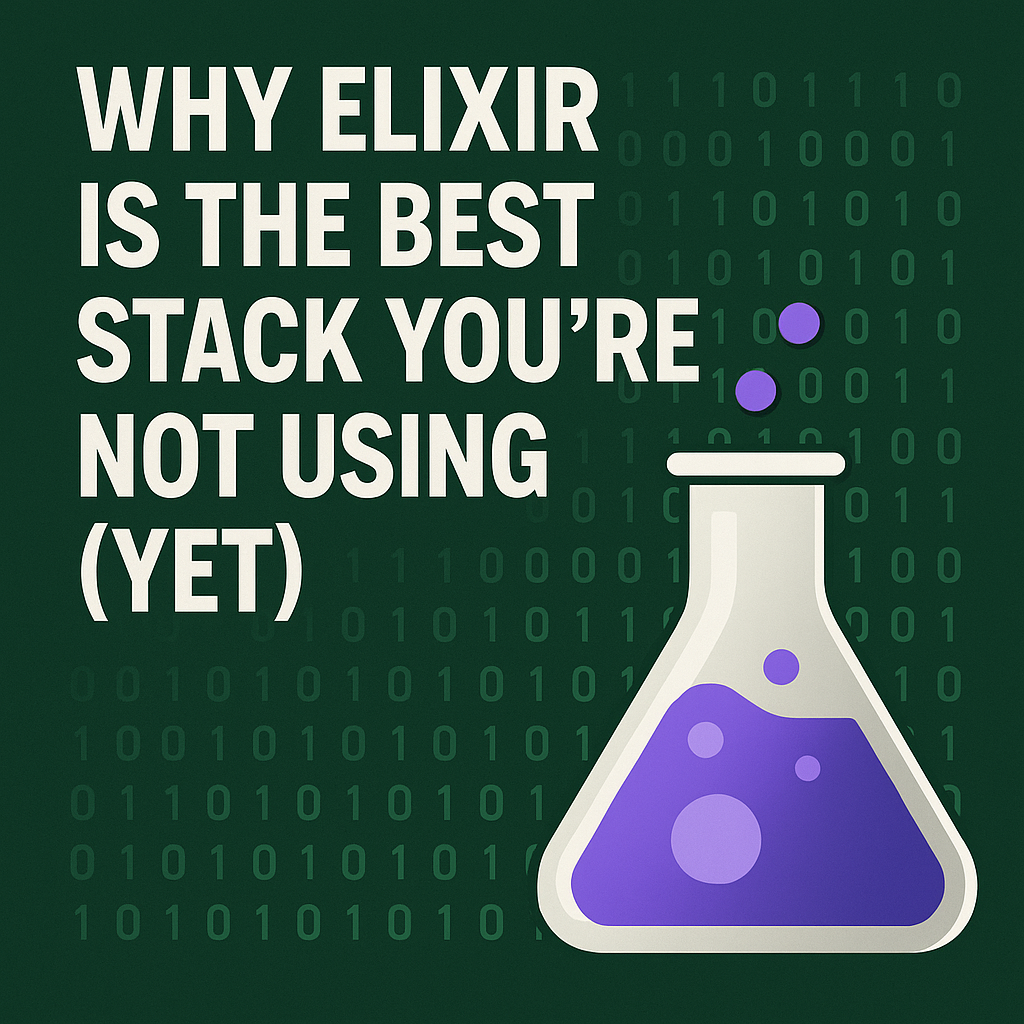Why Elixir Is the Best Stack You’re Not Using (Yet)

Functional. Fast. Fault-tolerant. And totally underrated.
“You take the blue pill—you keep using the same stacks you’ve always known. You take the red pill—you wake up in a world where applications scale like rebel fleets, crashes heal themselves, and real-time is built-in. Welcome to Elixir.”
The Framework From the Future (That's Been Here All Along)
Elixir is built on top of Erlang’s BEAM VM, a runtime environment that powers some of the most resilient systems in the world—think telecom switches, WhatsApp, and even parts of NASA.
But Elixir modernizes Erlang’s raw power with:
- Clean, Ruby-inspired syntax
- Built-in tooling and dependency management
- A joyful dev experience
First-class support for concurrency, distributed systems, and self-healing apps
In a world of noisy JavaScript stacks, Elixir is the quiet professional—the Blade Runner of backends: elegant, resilient, and deeply human.
Enter Phoenix: The Full-Stack Framework That Just Works
If Elixir is the engine, Phoenix is the starship.
Phoenix isn't just a web framework—it's a full-stack development experience with:
LiveView: Reactive frontends without writing a single line of JavaScript.
PubSub & Channels: Real-time broadcasting built into the core.
Built-in Auth, Routing, HTML Components: The essentials, minus the overhead.
And thanks to the BEAM’s architecture, Phoenix scales horizontally with less infrastructure, less memory, and less DevOps pain.
Want 10,000 WebSocket connections on a $5 VPS? Phoenix says: “I know kung fu.”
💻 Developer Experience: Functional with Flow
Working in Elixir feels like writing prose that runs in parallel:
✅ mix CLI for dependency and project management.
🔁 iex (interactive shell) to test, explore, and live-code.
🔬 Built-in testing and documentation support.
♻️ Hot code reloading (even in production).
You write pure functions, you compose them like Lego, and thanks to immutability, bugs don’t sneak in through side-effects. It’s the Jedi way.
📦 Use Cases: From CMSs to Critical Systems
At Fox Labs Developers, we’re building projects like Osto, a CMS powered by Phoenix LiveView and Elixir that rivals modern JavaScript-heavy editors with a fraction of the complexity.
But we’re not alone.
🧠 Who else is betting on this stack?
Discord: uses Elixir for internal messaging and control systems.
PepsiCo: built high-volume event-driven systems in Elixir.
PagerDuty: uses it for alerting pipelines.
WhatsApp: Erlang roots; still a benchmark in scale and reliability.
🧱 Fault-Tolerance: Let it Crash (It’s Fine)
Erlang introduced a radical idea: let your processes crash, and let supervisors restart them.
Elixir inherited this concept, making it trivial to build:
Self-healing apps
Highly concurrent systems
Zero-downtime upgrades
Picture this:
[Supervisor]
├── [GenServer: Cache]
├── [Task: EmailSender]
└── [Process: WebSocketClient]
If any one of these fails, the Supervisor restarts it instantly—like the Force restoring balance.
🤯 Why Aren’t More People Using Elixir?
Good question. It’s not hype-driven.
It doesn’t have a Big Tech backer.
And… it’s just quietly excellent.
“It’s not the language you start with. It’s the one you graduate into.”
– A wise engineer (or maybe Morpheus)
But things are changing. The Elixir ecosystem is maturing. The documentation is phenomenal. The community is helpful. And the performance benchmarks speak for themselves.
🏁 Conclusion: Your Stack Deserves Better
If you're tired of fragile systems, slow build times, and JavaScript fatigue, it's time to look at Elixir. Whether you’re building SaaS, a CMS, a dashboard, or something mission-critical, Elixir + Phoenix will make your stack faster, more resilient, and way more fun to maintain.
✅ What Now?
Try a Livebook: livebook.dev
Read next: “Phoenix LiveView vs React: Choose the Red Pill →”
Follow us: Foxlabs Developers
May your functions be pure, your sockets stay alive, and your supervisors ever vigilant.

